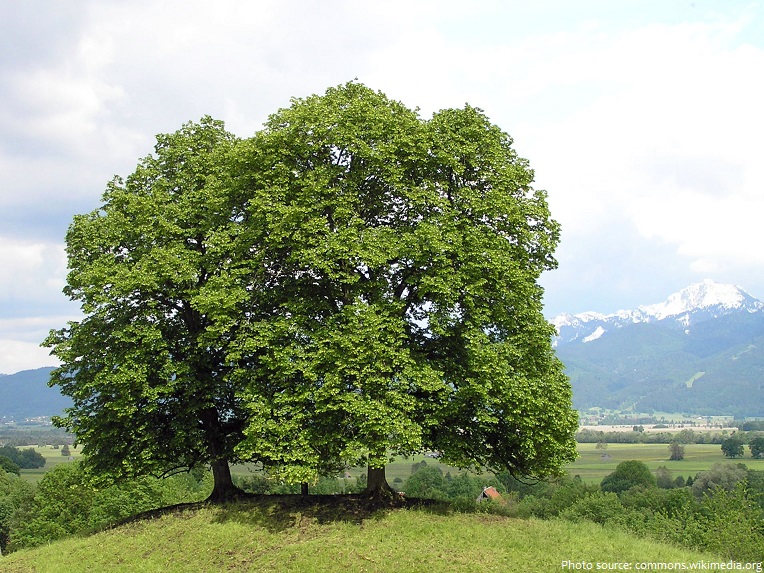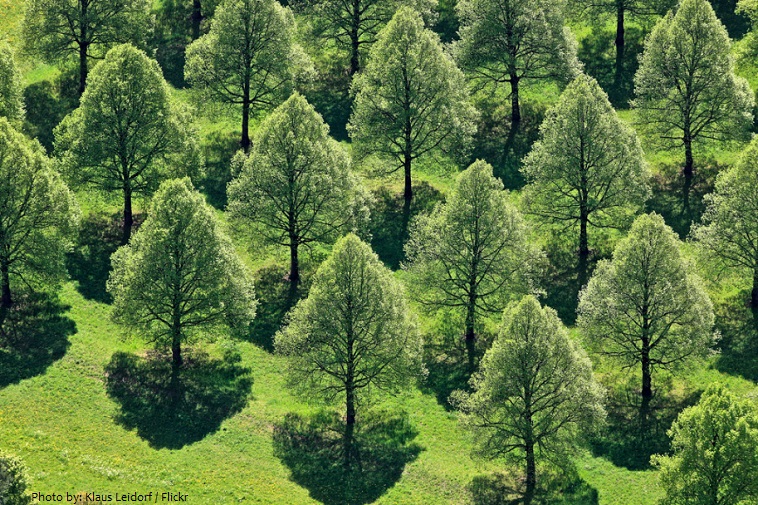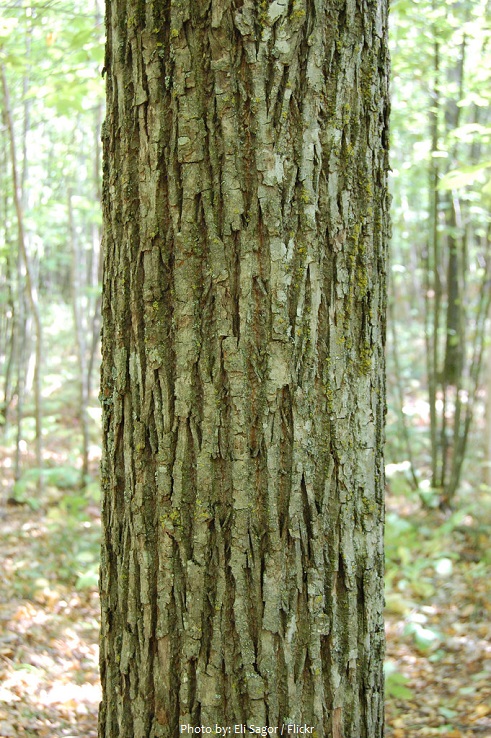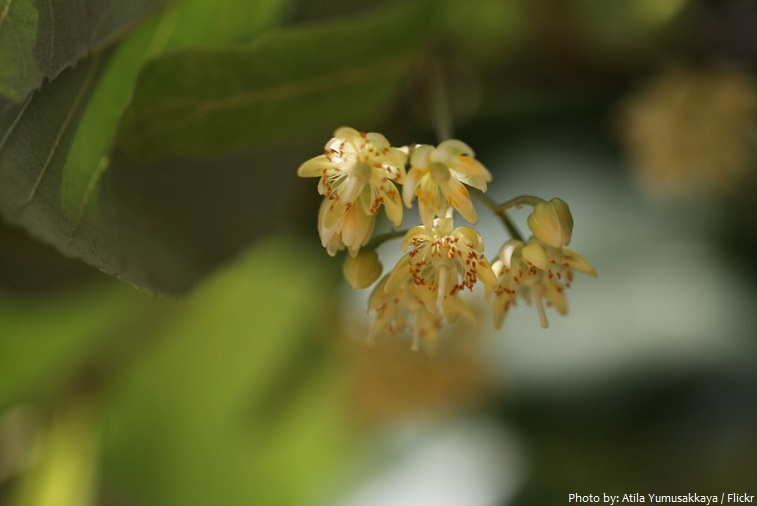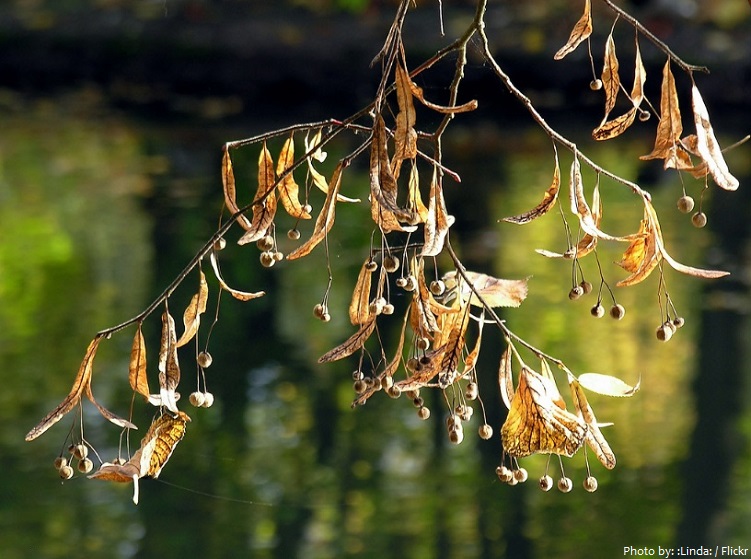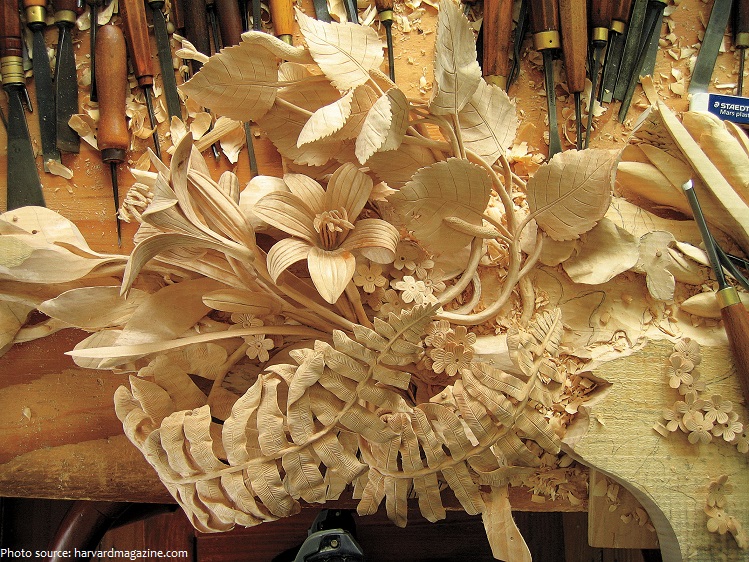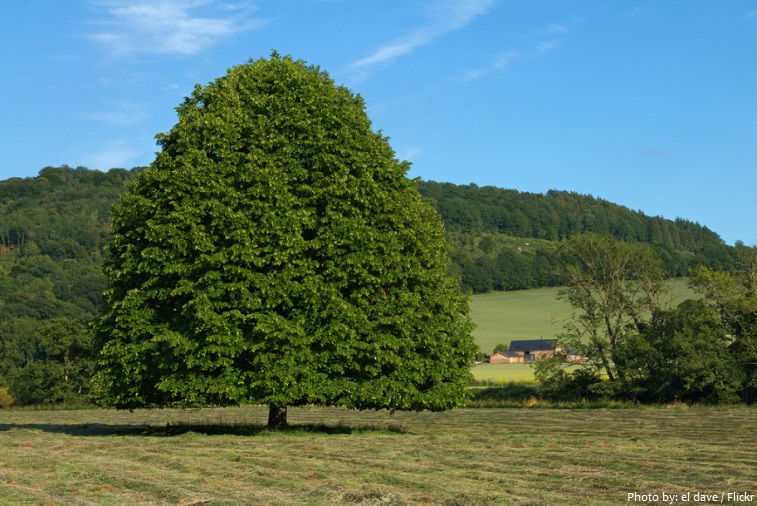Linden is one of three English names for the tree genus Tilia (also known as lime and basswood).
The genus is generally called lime or linden in Britain and linden, lime, or basswood in North America.
There are about 30 species of linden native throughout most of the temperate Northern Hemisphere. It can be found in Europe, North America and Asia.
Lindens prefer to grow on moist, fertile soils that are well drained and sufficiently aerated.
It grows in full sun and tolerates partial shade.
Lindens are one of the most attractive ornamental trees because of their symmetrical growth habit.
It usually has a lifespan of few hundred years, but there are specimens thought to be more than 1,000 years old.
Linden species are mostly large, deciduous trees, reaching typically 20 to 40 meters (65 to 130 ft) tall.
Young linden trees have nearly smooth grey bark. Old trees have grey to brown bark which is shallowly fissured.
Linden produces broad, heart-shaped, asymmetrical leaves with pointed tips and serrated edges. Leaves are 6 to 20 centimeters (2 1⁄4 to 7 3⁄4 in) across.
Leaves are green and hairy during the spring. They change color into yellow during the autumn.
Linden produces flowers during the late spring. Flowers are cream to yellow, fragrant and organized in clusters from 2 to 10.
Lindens are hermaphroditic, having perfect flowers with both male and female parts, pollinated by insects.
When flowers is pollinated by insects, they develop into round-oval, slightly ribbed fruits, with a pointed tip. Small balls of 0.3 centimeters (0.12 inch), grouped by 2, 3 or 4, and fitted with a wing
that facilitates their spread by wind.
Lindens are very important honey plants for beekeepers, producing a very pale but richly flavoured monofloral honey. The flowers are also used for herbal tea and tinctures; this kind of use is particularly popular in Europe and also used in North American herbal medicine practices.
The dried flowers are mildly sweet and sticky, and the fruit is somewhat sweet and mucilaginous. Linden Flower tea has a pleasing taste, due to the aromatic volatile oil found in the flowers. The
flowers, leaves, wood, and charcoal (obtained from the wood) are used for medicinal purposes.
Active ingredients in the Linden flowers include flavonoids (which act as antioxidants) and volatile oils. The plant also contains tannins that can act as an astringent.
Linden flowers are used in herbalism for colds, cough, fever, infections, inflammation, high blood pressure, headache (particularly migraine), and as a diuretic (increases urine production),
antispasmodic (reduces smooth muscle spasm along the digestive tract), and sedative.
New evidence shows that the flowers may be hepatoprotective (ability to prevent damage to the liver).
The linden wood is white and soft, its grain is very fine, but it does not resist well humidity. It is used to fabricate frameworks of pieces of furniture, picture frames, hoofs, printing boards, pencils, matches and piano keys. It is a popular wood for model building and for intricate carving.
Ease of working and good acoustic properties also make linden wood popular for electric guitar and bass bodies and for wind instruments such as recorders. Percussion manufacturers sometimes use it as a material for drum shells, both to enhance their sound and for their aesthetics.
It was often used by Vikings and Germanic tribes for constructing shields.
Known in the trade as basswood, particularly in North America, its name originates from the inner fibrous bark of the tree, known as bast. From the bark, were extracted fibres, teille, which, by retting, made ropes, mats and coarse fabrics.
Commonly called lime trees in the British Isles, they are not closely related to the lime fruit.
It is recommended as an ornamental tree when a mass of foliage or a deep shade is desired.
The linden is the national tree of Czech Republic, Slovakia and Slovenia.
In old Slavic mythology, the linden (lipa, as called in all Slavic languages) was considered a sacred tree. Particularly in Poland, many villages have a name “Święta Lipka” (or similar), which literally means “Holy Lime”.
In the Slavic Orthodox Christian world, linden wood was the preferred wood for panel icon painting. The icons by the hand of Andrei Rublev, including the Holy Trinity (Hospitality of Abraham), and The Savior, now in the State Tretyakov Gallery in Moscow, are painted on linden wood. Its wood was chosen for its ability to be sanded very smooth and for its resistance to warping once seasoned.
The Linden was also a highly symbolic and hallowed tree to the Germanic people in their native pre-Christian mythology. Originally, local communities assembled not only to celebrate and dance under a Linden tree, but to hold their judicial meetings there in order to restore justice and peace.
In Europe, some linden trees reached considerable ages. A coppice of T. cordata in Westonbirt Arboretum in Gloucestershire is estimated to be 2,000 years old. In the courtyard of the Imperial Castle at Nuremberg is a Linden which, by tradition recounted in 1900, was planted by the Empress Cunigunde, the wife of Henry II of Germany circa 1000.
Linden came to Earth over 70 million years ago. The fossils were found in North Siberia, Spitsbergen, Chukotka Peninsula… so it’s a very old and knowledgeable tree.
